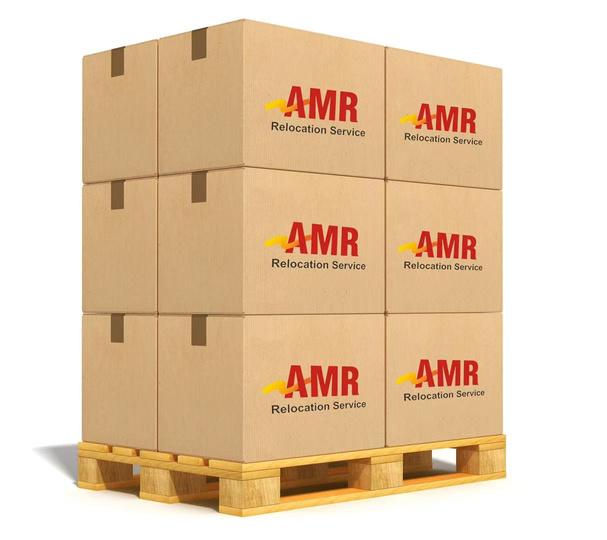
In air freight, understanding the relationship between Actual Weight, Volumetric Weight, and Air Chargeable Weight is crucial. These concepts affect not only the cost of shipping but also the method of transportation.
In moving /relocation world, these concepts are confusing to assignees sometimes, hence we are coming up this article for you to better comprehend them.
What is Air Chargeable Weight ?
Air Chargeable Weight (known as ACW)is the weight used to calculate the shipping cost, which is the greater of the actual weight or the volumetric weight.
Airlines use this strategy to compensate for the space occupied by light but bulky cargo. The formula to determine the chargeable weight is:
{Air Chargeable Weight} = \max(\text{Actual Weight}, \text{Volumetric Weight}), Actual Weight, Volumetric Weight, whichever is greater.
Therefore, we need to understand what are Actual Weight and Volumetric Weight, and here are the answers.
Actual Weight
Actual Weight refers to the physical weight of the cargo, usually measured in kilograms (kg) or pounds (lbs). This is the weight determined when the cargo is placed on a scale.
Volumetric Weight
Volumetric Weight, also known as dimensional weight, is a calculated weight based on the cargo's volume using a standard conversion formula. Airlines use volumetric weight to assess the space occupied by the cargo. For light but bulky items, the volumetric weight may be higher than the actual weight. The formula for calculating volumetric weight is:

Here, 6000 is a commonly used conversion factor. Different airlines might use slightly different factors, such as 5000 or 7000. In moving and relocation, 6000 is mostly commonly used.
Alternatively, we could use this formula, which is much easier to use and memorize:
Volumetric Weight (kg)=Volume in Cubic Meters x 167.
Example of the Relationship
Assume there is a cargo with an actual weight of 240 kg actual as weight and dimensions of 120cm x 100cm x 160cm. The volumetric weight is calculated as:

or (1.2m x 1.0m x 1.6m)*167=320 kg
Therefore, the Chargeable Weight of this cargo is the latter of the Actual Weight and Volumetric Weight,
which is 320 kg.
Conclusion
Understanding the relationship between actual weight, volumetric weight, and air chargeable weight helps in accurately estimating air freight costs and choosing the appropriate shipping method. Actual weight is the real weight of the cargo, volumetric weight reflects the space it occupies, and air chargeable weight ensures fair billing by considering both weight and volume.
Generally speaking, light cargo is charged according to its Volume Weight, while heavy cargo is charged according to its Actual Weight.
In practice, most personal effects shipments are light goods, shipment size would matter eventually.

什么是空运计费重量?
在航空货运中,了解实际重量(Actual Weight)、体积重量(Volumetric Weight)以及航空计费重量(Air Chargeable Weight)之间的关系至关重要。这些概念不仅影响运输成本,还决定了货物的运输方式。
在国际搬迁行业,这样概念有时候让委托人感到困惑,因此我们想通过此文章解释期待你更好的理解他们的关系。
什么是航空计费重量(Air Chargeable Weight)
航空计费重量是用于计算运费的重量,它是实际重量和体积重量中的较大者。航空公司采用这一策略是为了补偿轻而大的货物占据的货舱空间。
确定应收重量的公式为:
{空运计费重量} = \max(\text{实际重量}, \text{体积重量}),既,实际重量和体积重量中取较大者。
因此,我们需要了解什么是实际重量和体积重量,请继续往下阅读:
实际重量(Actual Weight)
实际重量是指货物本身的物理重量,通常以公斤(kg)或磅(lbs)为单位。这是货物放在秤上称出的重量。
体积重量(Volumetric Weight)
体积重量也称为体积计费重量,是基于货物的体积和标准换算公式计算出来的重量。航空公司使用体积重量来评估货物占用的空间。如果货物轻而大,体积重量可能比实际重量更高。计算体积重量的公式如下:

这里,6000 是常用的换算系数。不同的航空公司可能会使用略有不同的系数,例如 5000 或 7000。在搬迁货物中,6000 是最常用的。
或者,我们可以使用下面这个公式,它更容易使用和记忆:
体积重量(kg)=体积(以立方米为单位)X 167。
关系示例
假设如下托盘货物的实际重量为 240 公斤,外径尺寸为 120 厘米 x 100 厘米 x 160 厘米。体积重量计算如下:

或者 (1.2米 x 1.0米 x 1.6米)*167=320 公斤
因此此货物的航空计费重量为实际重量和体积重量中的后者,既是320公斤。
结论
了解实际重量、体积重量和空运计费重量之间的关系有助于准确估算空运成本并选择合适的运输方式。实际重量是货物的实际重量,体积重量反映其占用的空间,而空运计费重量则通过同时考虑重量和体积来确保公平计费。
一般来说,轻货按照体积重作计费重量,而重货则按照实际重量计费。
实际上,大多数空运运输的个人物品的都是轻型货物,因此体积才是计费的考量因素。




